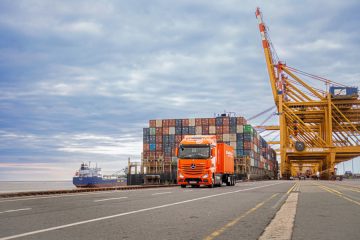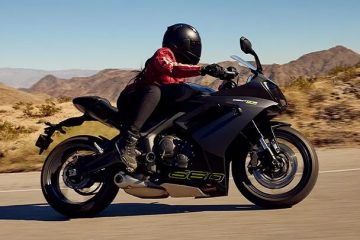![]() Providing good products to our customers with speed, affordability and low CO2 emissions
Providing good products to our customers with speed, affordability and low CO2 emissions
One year has passed since I acceded to the president of the company in June of last year, and we have entered into the stage where we need to draw up and execute a new growth strategy.
In the past several years, consumer preference has quickly shifted toward smaller sized vehicles in every automobile market around the world due to increasing environmental awareness on a global basis, as well as the structural changes that happened to the global economy. Honda must quickly respond to such changes in the times to achieve further growth and expansion in the future.
Our highest management priority is to establish a corporate structure that ensures a profit while we develop and commercialize advanced environmental technologies, strengthen our business in emerging markets and take prompt action to respond to the market shift toward small-sized vehicles.
Especially, as we are in the midst of a difficult business environment, nothing is more important than going back to Honda’s basic principle, that is, to see things from the customer’s view point, and continue offering products that please our customers.
 Based on this understanding, Honda’s "Direction for the next 10 years" was set. What I think is most important and the message I conveyed strongly to all Honda associates was "to provide good products to our customers with speed, affordability and low CO2 emissions."
Based on this understanding, Honda’s "Direction for the next 10 years" was set. What I think is most important and the message I conveyed strongly to all Honda associates was "to provide good products to our customers with speed, affordability and low CO2 emissions."
By "good products" we mean to embody customers’ wants and needs in attractive products using Honda’s unique technologies, knowledge and ingenuity. Such good products must be delivered with speed without making our customers wait, and at affordable prices which make our customers happy with their purchase. This is the direction Honda will take.
"With low CO2 emissions" represents our conviction based on the strong sense of crisis that, as a manufacturer of personal mobility, Honda will have no future unless we achieve a significant reduction of CO2 emissions.
In order to provide good products with speed, affordability and low CO2 emissions, concrete measures will be taken with a focus on the following three core areas:
1) Advancement of environmental technologies
2) Strengthening of the manufacturing system and capability
3) Strengthening of business operations in emerging nations
Advancement of environmental technologies
Automobiles
・Honda has been reducing CO2 emissions through technological advancement of a wide range of products including motorcycles, automobiles and power products. Honda has also been committed to the reduction of its environmental footprint through its energy creation products such as solar panels and cogeneration systems.
・Honda will accelerate the effort to reduce its environmental footprint by advancing its environmental technologies and making even more effort to achieve widespread market introduction of such technologies.
Widespread market introduction of IMA Hybrid System
・Honda introduced new models equipped with Honda’s original lightweight and compact IMA hybrid system, namely Insight and CR-Z. The percentage of hybrid vehicle sales among all Honda vehicle sales in Japan increased to 16% in 2009. Honda will accelerate widespread market introduction of IMA by enhancing the lineup of models equipped with the IMA system.
・Honda will introduce multiple models, mainly small-sized vehicles, equipped with the IMA system in Japan within approximately one year from now. The first one will be the Fit Hybrid which will be introduced to the Japanese market this fall.
・Honda will also pursue the advancement of battery technologies that are critical to the advancement of hybrid vehicles. The next-generation Civic Hybrid will be equipped with a high-output and compact lithium-ion battery, which will be supplied by Blue Energy, a joint venture company between GS Yuasa and Honda that will begin production of the battery at its plant in the latter half of this year.
・Honda has been devoting its company resources to the development of advanced environmental technologies. The results of such a strategy will start to be seen as products sometime around 2012.
Plug-in hybrid
・A new plug-in hybrid system for mid-size to larger vehicles is currently under development. Vehicles equipped with this new system are scheduled to go on sale in 2012 in Japan and the U.S.
・Honda will fulfill customer demand more precisely by developing and adopting multiple hybrid systems that are appropriate for vehicles of different sizes and uses.
Gasoline engine
・In the mid-term, internal combustion engines will remain as the main source of power for automobiles, and therefore Honda will continue advancing technologies to improve the performance and fuel economy of internal combustion engines. Honda will begin renewing its engine and transmission lineup starting in 2012 to further improve its fuel economy.
Diesel engine
・Diesel engines are also effective in reducing CO2 emissions. In addition to the currently available 2.2l engine, Honda is making progress in the development of a smaller diesel engine. A model equipped with this new smaller diesel engine will be introduced in Europe in 2012.
Fuel-cell electric vehicle
・In the long-term, fuel-cell electric vehicles will provide the ultimate mobility. And Honda will continue working on the technological advancement of the FCX Clarity as well as our hydrogen refueling systems.
Battery electric vehicle
・Though there still are some issues that need to be addressed such as range per charge and recharging time, battery EVs have the potential to create a new market as mobility that emits no CO2 during operation. Leveraging the technologies established through the development of fuel-cell electric vehicles, Honda will make progress in the development of a battery EV with a goal to put it in real world use as soon as possible. Honda’s battery EV is scheduled to go on sale in Japan and the U.S. in 2012.
Honda will introduce these products by around 2012 and further advance them and accelerate their more widespread introduction to the market in the next 10 years.
Motorcycles
・Considering the current limitation of battery performance, a battery EV will fulfill customer needs in the form of electric motorcycles.
・In December of this year, Honda will begin lease sales of EV-neo to businesses and individual business owners in Japan. Honda will continue to advance the technologies and reduce costs to make it available to individual customers as promptly as possible.
・As a unique trend in the world’s largest motorcycle market of China, the market for electric bicycles is rapidly growing there in addition to the market for the motorcycles equipped with gasoline engines Honda is planning to introduce a new product into this market in 2011.
・Honda will introduce electric motorcycles to both advanced and emerging nations, further improve product performance and cost competitiveness and strive to become a market leader in this field, as well.
Power products
・Honda will further advance its "energy creation products" such as solar panels and cogeneration systems to pursue their potential as the future household infrastructure.
Demonstration testing of the next-generation personal mobility
・At the Tokyo Motor Show last year, Honda proposed a concept for the future low-carbon mobility society that utilizes electromotive technologies. Honda will embody this concept and begin demonstration testing with the concept of "Honda Electric Mobility Synergy" in Japan and the U.S. within this year.
・In Japan, within this year, and conducted jointly with Kumamoto and Saitama prefecture where Honda already has some operations, Honda will begin the comprehensive demonstration testing of next-generation personal mobility that combines an energy supply infrastructure such as a solar-powered EV-refueling station with advanced environmentally-responsible vehicles such as the electric scooter EV-neo, plug-in hybrid vehicles, electric vehicles as well as other electromotive products such as the electric cart, Monpal. In addition, through the cooperation of the local community, Honda will study how future personal mobility should be designed to contribute to the improvement of the quality of life of local residents.
・In the U.S., starting by the end of this year, Honda will begin demonstration testing of automobile environmental technologies such as battery-electric vehicles and plug-in hybrid vehicles with participants including Stanford University, Google Inc. and the City of Torrance, California in separate testing under the Advanced Technology Demonstration Program.
Role of Japan
・Manufacturing technologies for advanced environmental technologies including electromotive technologies will be established and advanced in Japan where we have accumulated highly sophisticated manufacturing technologies and know how. In addition, further advancement of manufacturing technologies to accommodate the trend to make our products smaller will evolve from Japan to other parts of the world.
・Based on the recognition that the role played by Honda factories in Japan will become increasingly more important, Honda management has been discussing the roles our factories in Japan must play in the future.
・Honda factories in Japan will focus on the following three roles; 1) pursuit of manufacturing technologies for environmentally-responsible products and small-sized vehicles, 2) efficient production of the products to be sold in Japan and 3) strengthening the support functions for Honda plants outside of Japan.
・Based on this determination of the focus areas, the direction was determined for the two new plants in Japan where plans have been pending.
Yorii plant – which will become operation in 2013
・With a goal to begin production in 2013, Honda will resume preparation of the Yorii plant in Saitama. The Yorii plant will play a role not only to strengthen Honda’s cost and quality competitiveness, but also to establish the necessary and highly sophisticated next-generation manufacturing technologies related to the production of environmentally-responsible products and low CO2 emissions production. Furthermore Yorii will be responsible for evolving such technologies to other Honda production operations around the world.
・The Yorii plant will create new value and innovative technologies which can be realized only at the Yorii plant and lead other Honda plants around the world as a state-of-the-art next-generation plant which pursues energy efficiency.
・Through various initiatives, including the introduction of a system which optimally controls the amount of energy used for production and the recycling of energy, the Yorii plant will strive to become an environmentally-responsible and advanced auto plant which reduces the amount of energy used to produce each vehicle by more than 30% compared to production at the existing Sayama plant.
・The Yorii plant will start with small-volume production of environmentally-responsible vehicles which requires highly sophisticated manufacturing technologies to mature its advanced technologies, then eventually increase production volume. Then Yorii will evolve such manufacturing technologies, that are keys to the next-generation of Honda, to other Honda operations around the world to achieve the global growth of Honda.
Starting production of mini-vehicles in Suzuka Factory and cancelling the construction of a new Yachiyo plant
・To accommodate the global shift toward smaller vehicles, Honda will begin production of mini-vehicles at its Suzuka Factory in 2012. Through mini-vehicle production at Suzuka Factory, Honda will establish manufacturing technologies that will contribute to the effort to reduce the bodyweight and cost of Honda’s next-generation models.
・Such manufacturing technologies will be applied to small-sized vehicles, and then evolved from Suzuka to other Honda production operations around the world.
・Based on this decision, Yachiyo Industry decided to cancel the planned construction of a new Yachiyo plant. The mini-vehicle production at Yachiyo’s existing plant will be continued.
Global production
・Based on its basic policy to build products close to the customer, Honda will further localize its production mostly in emerging markets.
・Honda will strengthen its cross-factory/cross-border supply system by increasing the flexibility of its manufacturing system. As a result, Honda will establish a solid manufacturing system which enables Honda to better respond to drastic changes in the market.
Strengthening business in emerging markets
・In emerging nations, where continuous growth is expected, Honda will leverage its strength of having access to a wider range of customers through its motorcycle, automobile and power products businesses and thoroughly be committed to deliver products that customers want with more speed and affordability.
Motorcycle business
Emerging nations
・In emerging nations, motorcycles are a part of people’s daily lives, and giant markets with the overwhelming size of their populations have the potential to grow further and become key pillars of Honda’s business.
・Today, key competitors in those markets are Chinese and Indian makers. In order for Honda to remain as a market leader, Honda must not only maintain the high attractiveness and quality of our products but also further improve cost competitiveness to match the low prices of these competitors.
・In addition to developing attractive products, Honda has been increasing its cost competitiveness by pursuing the thorough localization of production including local procurement of components and materials. As a result of more than 40 years of such continued effort, Honda’s motorcycle production plant in Thailand has grown to be a production base of Honda’s global models.
・Following the introduction of PCX, an all-new sports type model will be introduced first to the Thai market this fall, then to other markets around the world. Honda will increase the number of global models produced in Asia.
・To achieve further localization, production capacity will be expanded. In addition to the capacity expansions in India and Vietnam, Honda will expand its annual motorcycle production capacity in Indonesia to 4 million units by building a new plant with a capacity of 500,000 units, which will become operational in the latter half of 2011. Moreover, Honda will continue introducing new models to the market to accommodate the growth of the Indonesian market.
・After the completion of these capacity expansions, Honda’s annual motorcycle production capacity in Asia (excluding Japan) will increase from the current approximately 16 million units to 18 million units by the end of 2011, enabling Honda to more quickly meet customer demand.
・By leveraging the economies of scale achieved by the annual production of 18 million units, Honda will make more progress in localizing all processes from development to procurement and production in order to further improve its competitiveness.
Advanced nations
・In advanced nations, the business environment is tough as the overall motorcycle market continues to shrink. However, Honda will leverage its competitiveness in Asia and create attractive products with more affordability. In doing so, Honda will strive to expand customer segments and revitalize the market.
・First, Honda will introduce a new mid-class model, which is expected to be a new benchmark for the FUN model category which is focused on recreational needs, to market around the world from next year.
・Unlike conventional FUN models which focus on high power output, the new model will utilize advanced technologies and ideas unique to Honda and highlight the joy of riding and ease of handling with some unique characteristics such as a dynamic ride with low-speed torque. By offering it at an affordable price, Honda will strive to make it a product that pleases more customers.
・With the introduction of FUN models, which offer new values and that more people feel familiar with and enjoy riding, Honda will create a new motorcycle market in advanced nations.
Nigeria
・In continuously growing African markets as well, Honda will leverage its competitiveness in Asia to expand sales.
・In Nigeria, the largest motorcycle market in Africa with the size of approximately 800,000 units annually, we can expect further expansion of a new market for motorcycles as an everyday means of transportation for individual consumers. Honda will launch a new 125cc model in mid-2011. China-made parts and components will be used to increase the cost competitiveness of the product, but at the same time the model will be appealing as it adequately fulfills customer requests.
・Honda will expand motorcycle sales for individual consumers in other African nations in addition to Nigeria.
Automobile business
・For automobile business as well, Honda will leverage the strength it has obtained through its localized motorcycle business in Asia.
・In order to be competitive in emerging nations where the market for small-sized vehicles is rapidly growing, Honda will further accelerate its effort to localize automobile production based on the concept to produce locally using locally produced dies, materials and components.
・In India, Honda is planning to introduce a new entry model vehicle in 2011 at a price less than 500,000 rupee.
・In Thailand, a new eco-car with an excellent level of fuel economy, based on the same vehicle to be introduced in India, will be introduced to the market in 2011. This vehicle is scheduled to be exported to other ASEAN nations as well.
Power products business
・In emerging nations, power products are even more closely involved in people’s daily lives than motorcycles, and therefore explosive growth of the market can be expected.
・Especially in Africa where demand for generators is growing rapidly, Honda will aim to increase generator sales by offering attractive products at affordable prices while maximizing the use of its production base in China and India. In India, in addition to conventional generators, Honda will begin production of an inverter-equipped generator, which can be used for precision equipment such as medical equipment and requires a high level of technological capability to produce. This will be the first time inverter-equipped generators will be produced in India.
・In China, where mechanization of agriculture is taking place, Honda will become the first Japanese maker to begin local production of a small tiller. By leveraging its accumulated technological capabilities and knowhow, Honda will proactively cultivate new markets.
Conclusion
・The next 10 years will be very critical for Honda to survive in the midst of major changes in the times that include an increase in environmental awareness and changes in the global economic structure.
・Honda is totally committed to provide good products with speed, affordability and low CO2 emissions while viewing things from the viewpoint of our customers.
・To address the increase in environmental awareness, Honda will further advance its original and advanced environmental technologies and accelerate the more widespread market introduction of such technologies by offering them in attractive products.
・To address changes in the structure of the global economy, Honda will re-strengthen its capability as a manufacturer that is unique to Honda. This includes two primary areas; 1) strengthening business in emerging nations and 2) strengthening the competitiveness of Honda’s small-sized vehicles.
・While executing these initiatives speedily, Honda will strengthen its corporate structure to achieve further growth and make another leap forward.




